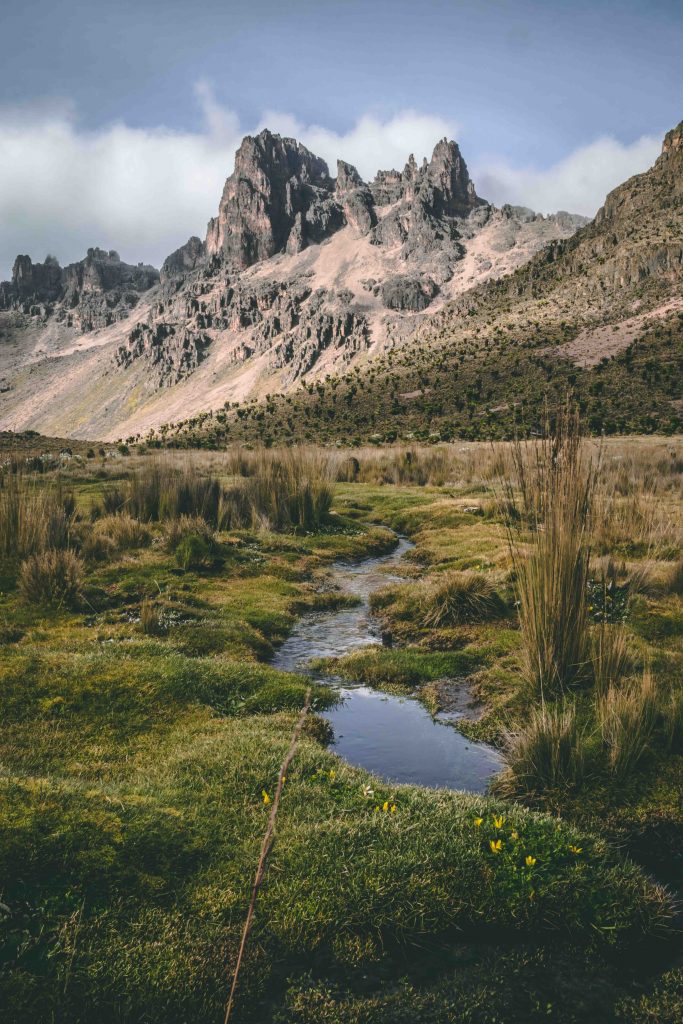Many visitors usually have concerns about the Mt Kenya and its rainy season as it may be difficult to climb during those times.
The mountain has its own weather patterns which can be quite unpredictable but I will cover the core weather and climate concept which will be of great help. However, Mt. Kenya can be climbed at all times of the year.
If possible, it is best to try to avoid the two main rainy seasons that may start in mid-March and last through till mid-June, the so called long rains, and from late October through still the end of December, the short rains.
Temperatures while in the sun will be very uncomfortable with climbers often walking up in a pair of shorts and a T-shirt. However, once the wind picks up and cloud comes in, the temperature at 4,000m, may drop rapidly to below zero. Here a night time temperature of around -10˚C can be expected.
Even at an altitude of 3,000m of the lower moorlands, a frost is often experienced. Summit temperatures range from about 10˚C in the morning sunlight to as low as -15˚C, just before dawn. Time of the year makes little difference to the mean daily maximum or minimum temperatures, though when there is a heavy cloud cover during the night, temperatures tend to be a little warmer than when the skies are clear.
Prevailing winds are from the south and east, and therefore those sides of the mountain receive the highest rainfall; up to 2,200mm. pa. at 3,000mm… Northern slopes receive the least amounts; 1,000mm. or so. As one climbs higher, so the amount of precipitation everywhere decreases, and by the time one reaches the base of the peaks, it has fallen to below 700mm. pa.
Typically, the daily Mt Kenya weather pattern is such that at dawn it is crystal clear, indeed Mt. Kilimanjaro, some 320km. to the south, is regularly visible from near Austrian Hut and from Point Lenana. Soon after, as the ground warms up, the air in contact with it, (thus heated), starts to flow up the mountain and by 1000hrs, the clouds that may have been down around 2,200m, in the early morning, have usually reached over 3,000m, and by noon the whole mountain is often completely enveloped in a giant cloud. From then until early evening, rain, snow or sleet, depending on the altitude, can be expected. In the evenings as the temperature falls, the reverse happens. The ground surface and air contact with it gets colder and so the air starts to flow back downhill. The cloud disappears, starting from around the peaks, and by 2000hrs, they are usually back below 3,000m. These phenomena are known as anabatic/katabatic effect. Highest wind speeds can be expected in the early morning (downhill flow) and mid-afternoon (uphill flow).
For those visitors who are camping, select a site that will be protected from the anticipated downhill flow at night.
Recommended weather-prediction websites. Weather Underground
Book a tour with us.

Great tips especially avoiding the raining season, what would you say about altitude training for first time climbers like me. Is it something you can skip on when climb or is it a necessity.
Hello Cathy! ALtitude affects all people differently. It tends to affect young fit males far more than females. That’s why as a first time climber, you have to use a slow pace when ascending in order to give enough time for your body to adjust. Altitude training is not very necessary. However, if you have NEVER been been to a high altitude before it is better to go to a physician before climbing. Kindly read my article on Mountain Sickness for more info.